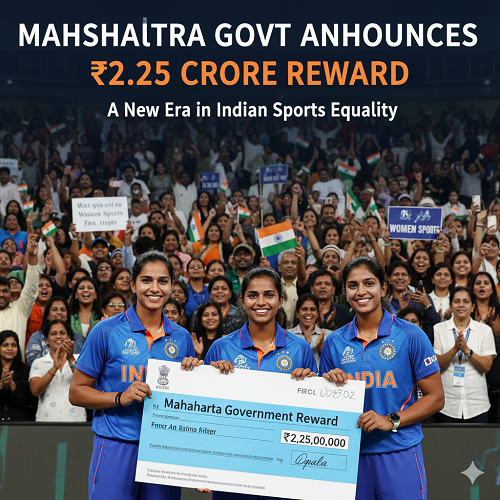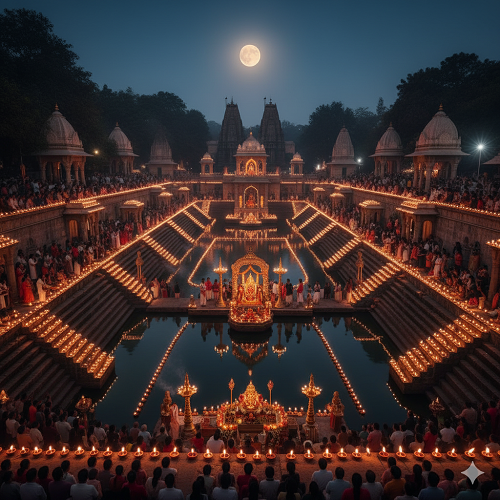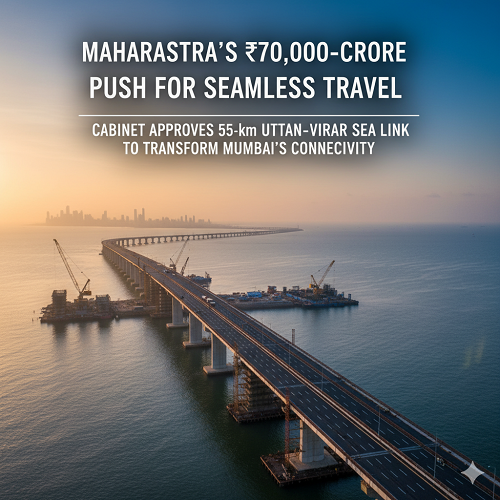
Mumbai Eyes Water Metro to Navi Mumbai Airport, A Bold Step Toward Smarter Urban Mobility
Mumbai’s relentless traffic is both a testament to its energy and a reflection of its growing infrastructural strain. With roadways packed beyond capacity and metro corridors still expanding, the city’s planners are now turning to an unconventional but promising alternative, water-based public transport. The idea, modelled on Kerala’s successful Kochi Water Metro, could soon link Mumbai and Navi Mumbai, connecting the city to its upcoming international airport through waterways instead of roads.
The plan was revealed by Ashwini Bhide, Additional Chief Secretary to the Chief Minister and Managing Director of the Mumbai Metro Rail Corporation (MMRC), during an event hosted by the Indian Merchant Chamber. Bhide confirmed that the Maharashtra Maritime Board has already prepared a proposal, with Kochi Shipyard Company tasked to conduct a detailed feasibility study. “The water metro project in Kochi has been successful, and similar eco-friendly transport options are being explored for Mumbai. This project is being taken seriously,” she said, as quoted by News18 Lokmat.
Blueprint for a Maritime Commute
If implemented, the Mumbai Water Metro could transform how residents move across the city’s congested landscape. According to the report prepared by Kochi Metro Rail Corporation Limited (KMRCL), the project envisions the construction of 29 terminals and 10 routes, creating a network that connects the city’s suburbs, business districts, and the Navi Mumbai International Airport.
Maharashtra Fisheries and Ports Minister Nitesh Rane, who received the KMRCL report in June, has already directed officials to submit a detailed development plan within three months. He emphasized that the water metro should be designed as an integrated transport system, connecting seamlessly with existing metro lines, suburban railways, and road transport.
“The water metro will be a good option to connect suburbs with the city and south Mumbai with Navi Mumbai,” Rane said. “The jetty and metro terminal should be developed on the lines of the metro. Water metro should be connected with other modes of transport.”
The project is expected to cost around ₹2,500 crore, covering construction of passenger facilities, jetty terminals, and the purchase of ferries. If successful, it could offer a sustainable and time-efficient alternative to commuting through Mumbai’s gridlocked roadways.
Kochi’s Example and What Mumbai Can Learn
The Kochi Water Metro, the inspiration for this proposal, has already proven its potential. Launched in April 2023, it is the world’s first fully integrated urban water transport system using electric ferries and hybrid boats to connect island communities with the mainland. The system covers a network of 16 routes, 38 terminals, and 75 km of waterways, with phase one operating over 41 km.
Operated by Cochin Shipyard Ltd, Kochi’s fleet includes 50-passenger and 100-passenger boats powered by lithium-ion batteries. The service has carried nearly 40 lakh passengers in just over a year, underlining its appeal as a sustainable, affordable, and efficient transport solution. It has not only eased congestion on city roads but also reduced travel time, fuel consumption, and pollution levels.
For Mumbai, where geography provides over 150 km of coastline and creek systems, a similar waterway network could complement the city’s crowded roads and railways. The success of Kochi offers a working model for operational efficiency, environmental sustainability, and public acceptance.
Integrating Metro, Water, and Bus Networks
The water metro proposal aligns with Mumbai’s broader efforts to build an interconnected, multimodal transport network. Alongside the expansion of metro corridors, the government is addressing operational gaps in the existing Metro-3 line, which has faced mobile network and Wi-Fi connectivity issues.
Bhide announced that the MMRC is in talks with multiple telecom companies to provide 5G connectivity across all metro routes. “Bharat Sanchar Nigam Limited has also been approached, and the Chief Minister has written to the Union Telecom Minister. We are confident of a positive outcome,” she said.
Currently, Wi-Fi is available only in ticketing zones, but plans are underway to extend coverage to platforms and tunnels. The goal is to create seamless digital access for passengers, making underground transit as connected as surface travel.
Bhide also highlighted plans to integrate BEST bus services with metro stations to enable smoother last-mile connectivity. “Currently, BEST operates around 2,500 buses, down from 4,500 a few years ago. Mumbai needs at least 10,000 buses, and work is underway to increase the fleet in the coming days,” she said.
The integration of bus, metro, and water-based systems could redefine urban commuting, offering a flexible and environment-friendly network capable of handling millions of daily trips without overburdening any single mode.
Charting Mumbai’s Next Commute Revolution
The proposed water metro is more than a transport innovation, it represents a fundamental shift in how Mumbai thinks about urban mobility. For a city built on seven islands, it is almost poetic that the solution to its modern congestion crisis may come from the very waters that surround it.
If approved and executed effectively, the project could reshape commuting patterns, reduce emissions, and improve the quality of life for millions. It will also test Mumbai’s capacity for coordinated planning, inter-departmental execution, and sustained maintenance—a challenge that has historically hindered many ambitious infrastructure projects.
The initiative’s potential to link Navi Mumbai International Airport, the coastal business zones, and suburban residential belts through clean, electric ferries offers a futuristic vision of mobility, one that combines technology with geography. In an era of climate urgency and urban overload, this could mark the beginning of a new equilibrium between growth and sustainability.
Mumbai’s water metro dream is still on paper, but if the city dares to follow through, it could set a national precedent. A successful rollout would not only give citizens a faster way to travel but also prove that India’s most crowded metropolis can still innovate its way out of congestion. For the city of dreams, that would be the ultimate voyage forward.





